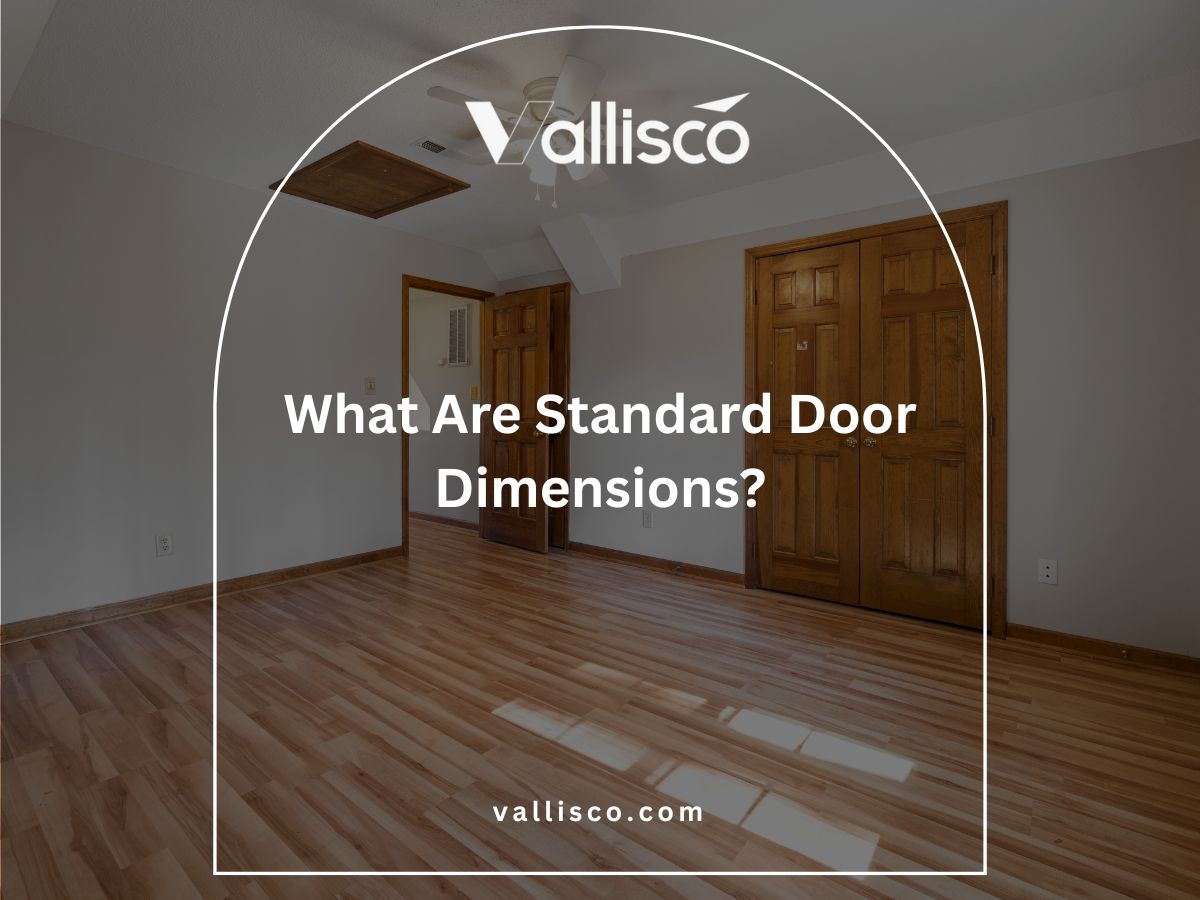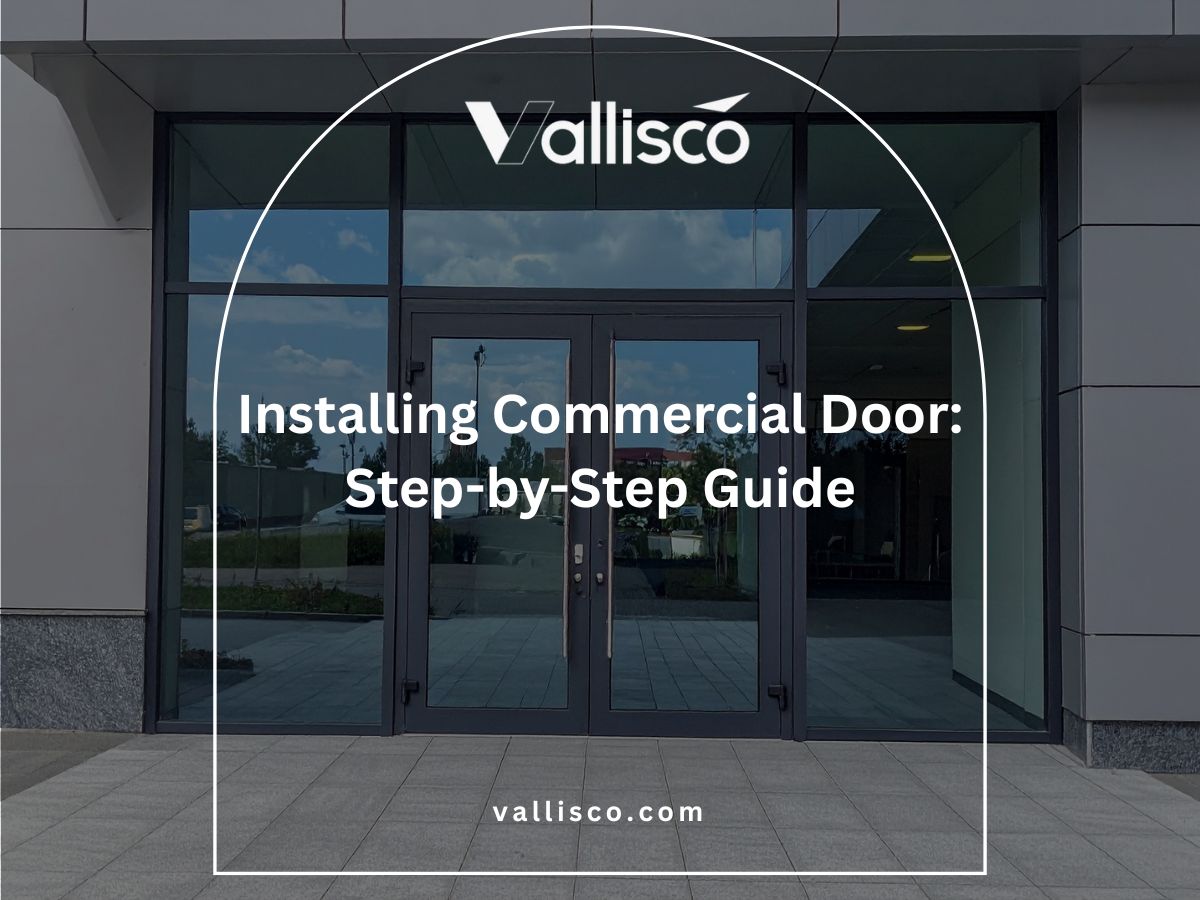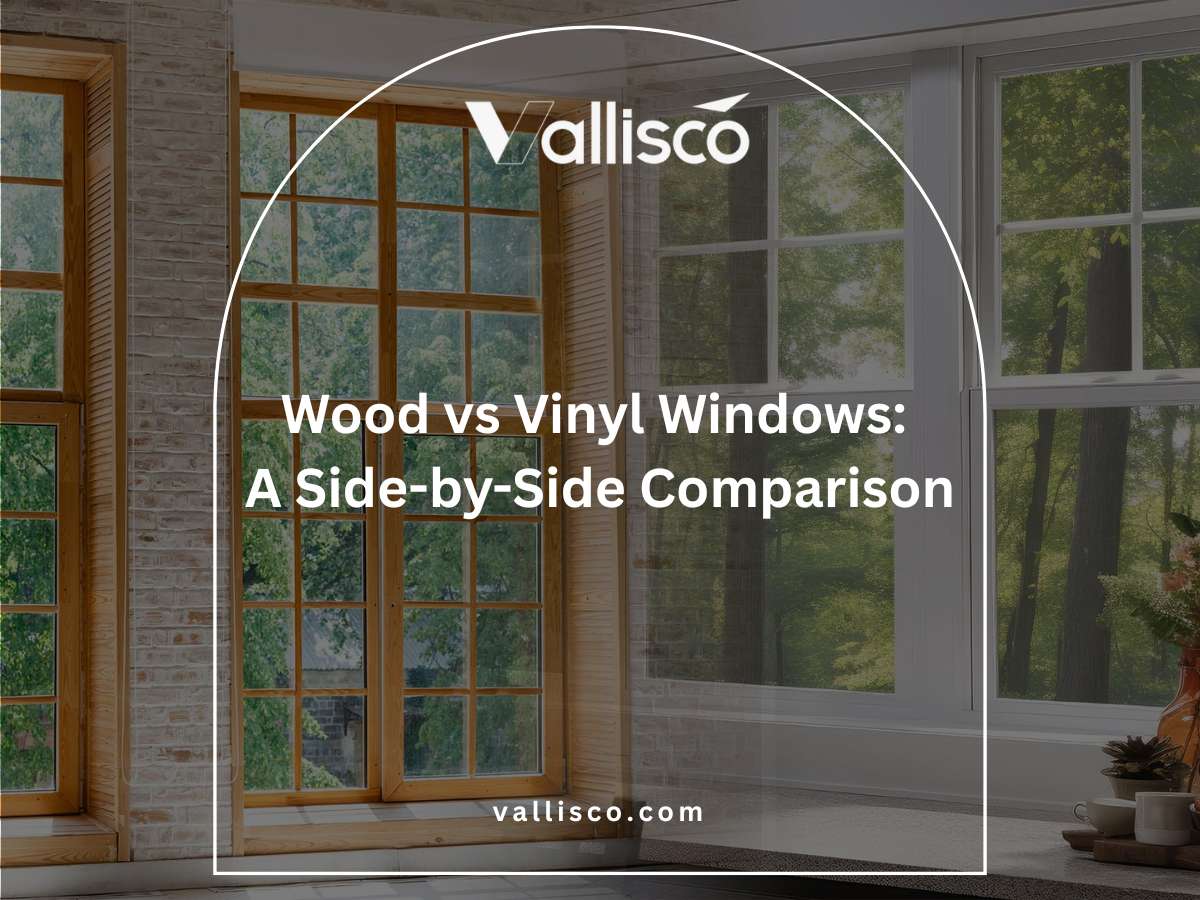I once worked with a hotel developer who installed chain drive openers in every garage unit. Within weeks, guests began complaining about the noise. Replacing them after installation wasn’t cheap and the quiet belt drive models should’ve been chosen from the start.
That mistake stuck with me.
Since then, I’ve helped property teams, engineers, and facility managers choose the right garage door systems based on use case, noise tolerance, and long-term performance.
In this article, you’ll see the real difference between garage door chain and belt drive openers. I’ll break down how each performs under different loads, environments, and daily cycles so you can match the right drive system to your application.
Noise, maintenance, cost, and reliability all matters in your line of work.
So let’s start!
Quick Comparison Chart
Ready to dig deeper? Let’s explore how these systems actually work and what it means for your building.
| Feature | Chain Drive | Belt Drive |
| Noise Level | Loud; metal-on-metal sound and noticeable vibration | Quiet and smooth; ideal for bedrooms and guest areas |
| Lifting Capacity | Handles 500–800 lbs; ideal for large or heavy doors | Best for 300–500 lbs; suited for standard doors |
| Smart Compatibility | Basic models need upgrades for app or Wi-Fi use | Most models come smart-ready with built-in Wi-Fi |
| Vibration | More vibration during operation; can affect structure | Minimal vibration; better for finished interiors |
| Climate Suitability | Works well in dusty, humid, or unheated garages | Performs best in dry, indoor, temperature-controlled spaces |
| Emergency Handling | Manual release cord included; slower emergency stop | Often includes sensors, auto-reverse, and backup battery |
| Installation Complexity | Heavier and more parts; may take longer to install | Lighter and simpler setup; often easier to install |
| Maintenance Requirements | Requires chain oiling and regular tension checks | Low maintenance; fewer moving metal parts to service |
| Aesthetic Design | Industrial look; visible metal chain and track | Sleek, modern appearance; blends better with high-end builds |
| Durability Under Load | Excellent for repeated use and heavier doors | Performs well under light-to-moderate daily use |
| Best Use Cases | Greenhouses, utility garages, commercial doors | Villas, smart homes, guest houses, modern residential builds |
Now that you’ve seen the big picture, let’s take a closer look at each drive type so you can find the right fit for your project.
1. What Is Chain Drive?
A chain drive garage door opener uses a metal chain to move the door along a rail. The chain pulls a trolley that lifts or lowers the door. It’s a straightforward system, often chosen for its strength and lower cost. I’ve worked with property owners who used chain drives in service zones or outbuildings. One hotel project installed them for a storage garage, but the noise became noticeable through the guestroom wall.
Chain drives work well for heavier garage doors and harsher conditions. However, they tend to be loud and need more maintenance, like chain lubrication and occasional tightening. If your garage is close to guest areas or quiet zones, it might not be the best fit. But for detached buildings, utility spaces, or greenhouses, they can be a reliable option. Think about how often it’ll run and who will hear it.
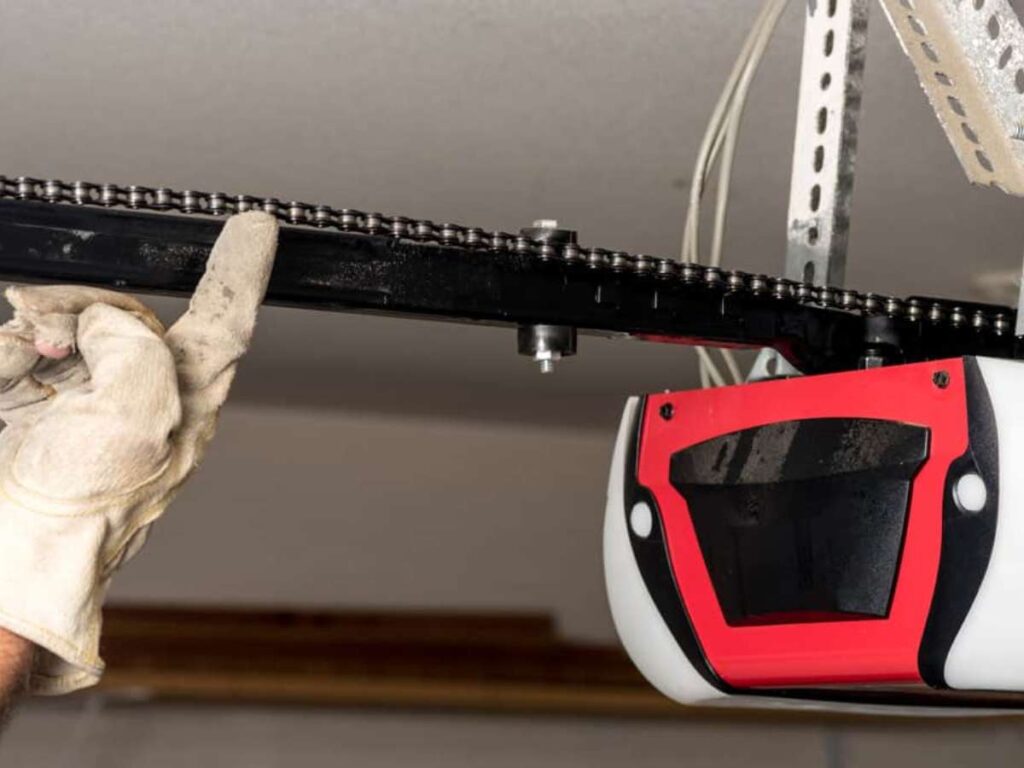
2. What Is Belt Drive?
A belt drive garage door opener uses a rubber or polyurethane belt to move the door along a metal rail. It works like a chain drive, but instead of metal links, the belt provides smoother and quieter motion. I once worked with a villa developer who swapped out several chain drive units mid-project. Guest rooms were nearby, and the noise just didn’t fit the standard they were aiming for.
Belt drives are often chosen for villas, hotels, or quiet residential spaces. They’re ideal when smooth, low-noise operation is important. You might pay more upfront, but you’ll likely hear fewer complaints later. They also require less upkeep since there’s no metal chain to lubricate or tighten. If comfort is part of your build spec, this is worth a closer look.
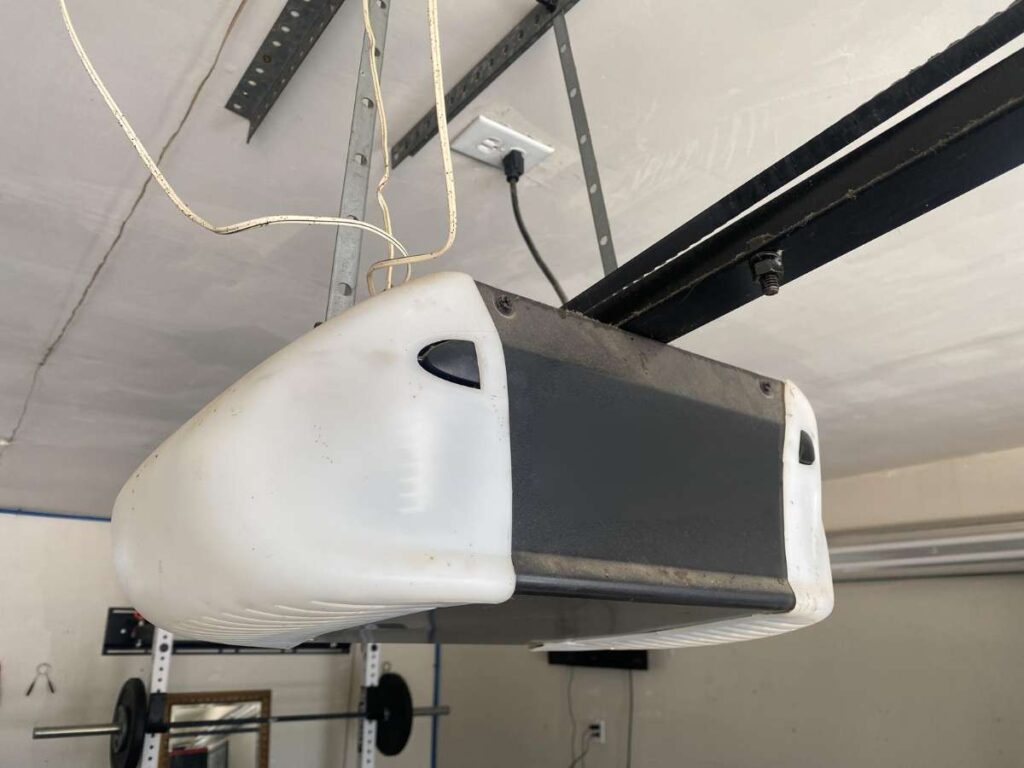
3. Noise Level
Noise can easily become a problem if the garage is close to guest rooms or living areas. In villas, inns, or any place where quiet matters, the type of drive system you choose makes a noticeable difference. Some systems run loud. Others barely make a sound. That difference can affect comfort, reviews, and even how a space is used.
Here’s how each system performs when it comes to sound:
Chain Drive: Loud and Mechanical
- Metal-on-Metal Contact: The steel chain moves along the rail and connects with other metal parts. This creates a clanking or grinding noise during operation.
- Vibration Through Structure: The motion can carry through beams, walls, and ceilings. This makes the sound more noticeable in nearby rooms.
- Less Suited for Quiet Areas: Chain drives are better for detached garages or service spaces. In guest-facing properties, the sound may feel disruptive.
Belt Drive: Quiet and Smooth
- Soft Belt Material: The belt is made of rubber or polyurethane, which moves more gently along the track. This leads to much quieter operation compared to chains.
- Lower Structural Vibration: With less friction and softer movement, belt drives create fewer vibrations. That keeps nearby rooms more peaceful, even during use.
- Better Fit for Guest-Facing Areas: Belt drives are often used in villas, B&Bs, and homes where comfort matters. They reduce unwanted noise during early mornings or late-night entries.
Final Verdict on Noise Level
Chain drives are louder and send more vibration through walls, making them better suited for non-living spaces. Belt drives offer quieter, smoother operation and are the stronger choice for villas, guesthouses, or homes where silence matters.
4. Strength and Load Capacity
The weight of a garage door matters more than most people realize. Whether it’s a heavy insulated panel or a wide commercial opening, the drive system needs to handle the load without strain. If it doesn’t, the motor can wear out early or fail completely.
During planning, it’s worth thinking about the material, size, and how often the door will be used. For high-traffic zones like greenhouses or service garages, load capacity plays a major role in system life. Here’s how each drive type performs.
Chain Drive: Built for Heavier Loads
- Higher Lifting Strength: Chain drives typically support 500 to 800 pounds, depending on motor size and hardware. They’re well-suited for solid wood, insulated steel, or oversized doors.
- Better for Wide or Tall Openings: Projects with large or custom-size doors often rely on chain drives. They provide consistent power without slipping or strain.
- Performs Well in High-Use Areas: For garages that open and close multiple times daily, chain drives hold up longer. They’re commonly used in greenhouses, utility zones, and delivery areas.
Belt Drive: Lighter but Still Capable
- Ideal for Standard Doors: Belt drives usually handle 300 to 500 pounds. This works well for single aluminum or lightweight sectional garage doors.
- Not Built for Extreme Loads: If the door is oversized or built from dense materials, the belt may stretch or wear down faster. It’s better suited for light-duty use.
- Quiet and Smooth for Residential Setups: In homes, villas, or guest properties, a belt drive can deliver quiet performance without overworking the system.
Final Verdict
Chain drives are better for heavier doors, wide openings, and frequent daily use. Belt drives work best with standard residential doors under 500 pounds, especially where quiet operation is also a priority. Choose based on weight, size, and how often the door will be used.
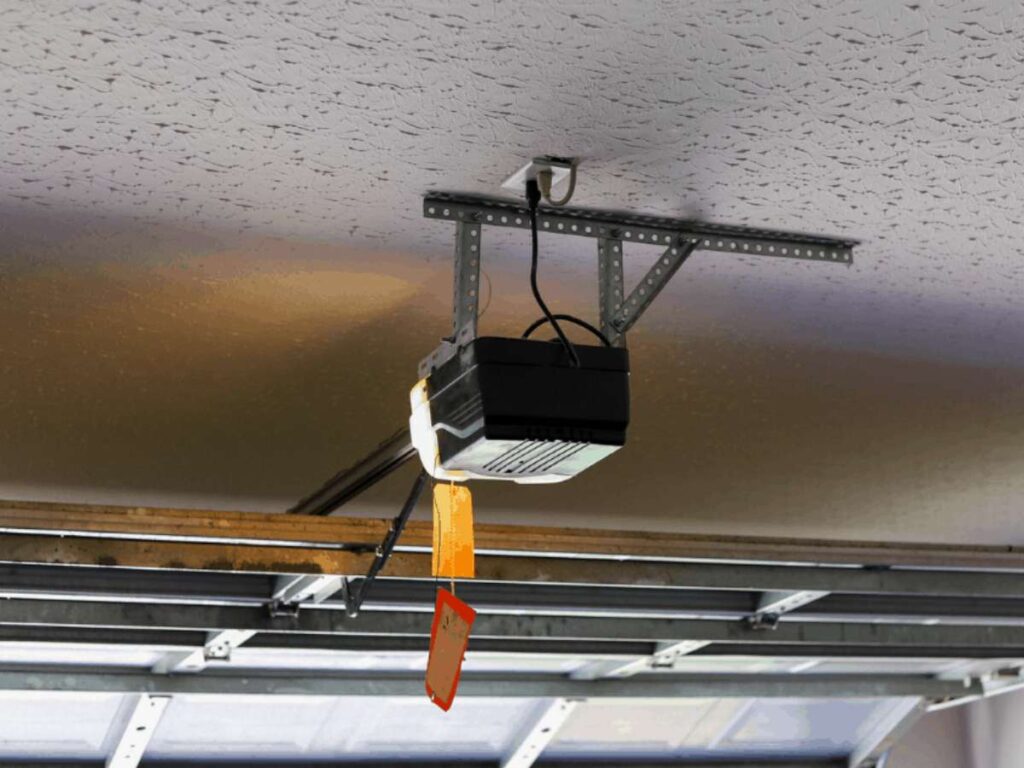
5. Vibration and Smoothness of Operation
Smooth garage door movement may not seem like a major concern during planning, but it quickly becomes noticeable once the system is in use. In guest-facing properties or homes with finished garages, the way a door opens and closes can impact comfort, structure, and long-term performance.
Chain Drive: More Vibration, Less Smooth
- Creates Noticeable Vibration: Chain drives produce more movement as the chain pulls the door. This vibration can pass into ceilings and walls nearby.
- Less Fluid During Travel: Lifting and lowering can feel jerky, especially on larger or heavier doors. That movement puts added strain on the system.
- Can Cause Wear to Fixtures Over Time: Fasteners and mounting points may loosen gradually. In finished garages, this can lead to small cracks or minor alignment issues.
Belt Drive: Smooth and Controlled
- Operates With Minimal Vibration: The belt glides cleanly along the rail with steady motion. It doesn’t rattle or shake surrounding structures.
- Gentle Motion Protects Structure: There’s less pressure on ceilings, beams, and drywall. This is helpful for guest-facing buildings or homes with shared walls.
- Improves Door and Opener Life: The smoother motion lowers stress on moving parts. That often means fewer service calls and longer system life.
Final Verdict
Chain drives create more vibration and produce a rougher overall motion, which may affect both the system and the space around it. Belt drives offer smoother, quieter movement that protects surrounding finishes and extends the life of the opener. For any property that values comfort, quiet, and structural stability, the belt drive is the better choice.
6. Smart Features and Automation Compatibility
Smart home integration is becoming a common request in many new builds. Whether you’re working on a villa, a rental unit, or a high-end residential home, people want more control over their spaces. That includes the garage door. Being able to open and monitor it from a smartphone, or link it to a smart assistant, adds real value for the owner.
If you’re planning automation into your project, it helps to know which drive system fits better with modern tech. While both chain and belt drives can support smart features, one is clearly more ready out of the box.
Chain Drive: Basic but Can Be Upgraded
- Less Commonly Integrated by Default: Chain drives often ship with basic controls. Many don’t include built-in Wi-Fi or smart features unless you upgrade the opener.
- Can Still Work With Automation: It’s possible to connect chain drive systems to smart platforms, but it usually requires extra hardware. That adds time, cost, and setup work during installation.
- Better for Utility-Only Spaces: If the garage is for back-of-house use or doesn’t require remote access, a basic chain drive setup may be all you need.
Belt Drive: Built for Smart Systems
- Comes Smart-Ready: Most modern belt drive openers include built-in Wi-Fi. This lets users connect directly to mobile apps without extra accessories.
- Compatible With Major Platforms: Belt drives often support Google Home, Alexa, Apple HomeKit, and smartphone apps like myQ. This makes setup easier for smart homes and guest properties with automated check-in systems.
- Ideal for Remote or High-Tech Projects: For properties with app-based control, security alerts, or home automation hubs, belt drives offer better compatibility and convenience.
Final Verdict
Chain drives can support smart features, but they usually require upgrades and extra setup. Belt drives often include smart functions from the start and work better with connected platforms. For builds that include automation, guest access control, or mobile monitoring, a belt drive is the more convenient and future-ready choice.

7. Climate and Environmental Suitability
Weather conditions affect more than just the roof or walls of a building. Your garage door system also reacts to moisture, dust, and temperature swings. If the drive mechanism isn’t a good match for the climate, you may run into early wear, corrosion, or reliability issues.
When you’re working on properties near the coast, in dry desert zones, or at higher elevations, the environment should guide your choice. Chain and belt drives each handle conditions differently, and that can make a difference over time.
Chain Drive: Built for Tougher Environments
- Performs Well in Harsh Conditions: Chain drives tend to work better in garages that are exposed to outside air. They hold up well in humidity, cold, or dusty areas.
- May Need Occasional Oiling: The metal chain can rust without proper maintenance. A light coat of oil keeps it protected and running smoothly.
- Good for Utility and Outdoor Garages: Chain drives are often used in greenhouses, barns, or garages with no heating or insulation. They handle fluctuating conditions better than rubber-based systems.
Belt Drive: Best in Controlled Conditions
- Sensitive to Moisture and Heat: Belt materials can wear down faster in wet or hot environments. If exposed too often, the belt may stretch or crack over time.
- Best in Climate-Controlled Spaces: Belt drives perform well in insulated garages or properties with stable indoor conditions. This keeps the belt material from expanding or drying out.
- Ideal for Finished Interiors: If the garage is fully enclosed and used as a living or storage space, belt drives keep things quiet and consistent.
Final Verdict
Chain drives are more durable in garages exposed to outdoor air, fluctuating temperatures, or debris from nearby landscaping or construction. Belt drives work best in sealed, indoor spaces where humidity and temperature stay fairly stable.
For villas near the ocean, hotels in dry regions, or homes in cold climates, chain drives offer more reliable long-term performance. Belt drives are a better match for finished, climate-controlled interiors.
8. Safety and Emergency Handling
Garage door safety is something you only think about when something goes wrong. But in properties with families, children, or short-term guests, it should be part of the planning from the start. Reliable emergency release and responsive safety features can prevent damage or worse, injury.
Both chain and belt drives offer basic safety, but they respond a little differently during emergencies or power loss. If you’re working on a shared-use property or a family home, it’s important to consider how quickly and easily the system reacts under stress.
Chain Drive: Basic and Manual
- Includes Manual Release Feature: Most chain drive systems come with a red cord that disconnects the opener from the door. This allows someone to lift the door by hand during a power outage.
- Slower Emergency Stop Response: Because the chain has more tension, it may take slightly longer to stop during sudden reversals. That delay is small but worth noting in garages with frequent foot traffic.
- Best in Lower-Traffic Garages: Chain drives are commonly used in areas where fewer people pass through. They still offer solid safety, but without the advanced add-ons found in newer systems.
Belt Drive: Smarter and Faster
- Comes With Safety Sensors: Most belt drive models include photo-eye sensors. These detect motion under the door and trigger an auto-reverse if something gets in the way.
- Battery Backup Is Often Included: Many belt drive systems now come with built-in battery backups. This keeps the opener working even during power loss, which adds another layer of safety.
- Helpful in Guest or Family Areas: If your garage is shared with kids, guests, or elderly residents, faster response and automatic features offer peace of mind.
Final Verdict
Chain drives provide manual release features but may respond more slowly in sudden-stop situations. Belt drives often include safety sensors, smoother stops, and backup power, making them a better fit for properties that prioritize quick response. For villas or guest garages fitted with Vallisco’s doors, a belt drive offers safety and quiet function that complements both the structure and experience.
12. Final Decision Guide: Which One Is Right for You?
Choosing between a chain drive and a belt drive isn’t just about technical specs. It depends on where the garage is, how it’ll be used, and what kind of experience you’re aiming to create. Some builds need raw strength and simplicity. Others need smooth, quiet operation that fits the overall look and feel of the property.
Let’s look at how to make the right choice, based on real project needs.
Noise Sensitivity
Choose a belt drive if your garage is located near bedrooms, shared walls, or guest areas. It runs quietly and produces less vibration, making it ideal for peaceful environments. In hotels, B&Bs, or villas with nighttime check-ins, this can really shape the guest experience. A chain drive, by comparison, might feel too loud in these kinds of spaces.
Door Weight and Size
Look for a chain drive when your project involves large, solid, or custom-sized garage doors. These openers can handle heavier loads more reliably, especially over time. If the door weighs more than 500 pounds or opens several times a day, chain drive is a safer choice. Belt drives perform well, but only within moderate weight limits.
Smart Compatibility
Choose a belt drive system if your client expects mobile control, app access, or voice automation. Most newer belt drives come Wi-Fi-ready and connect easily to Google Home, Alexa, or Apple HomeKit. Chain drives can be upgraded, but that usually adds cost and setup time. If automation is part of the home design, belt is the easier path.
Garage Environment
Opt for a chain drive in garages exposed to outdoor air, dust, or moisture. These systems perform better in tough, changing environments and are less sensitive to temperature swings. Belt drives are a better match for sealed, insulated spaces with consistent indoor conditions. If you’re working on a greenhouse, utility building, or detached garage, chain drive makes more sense.
Safety and Access
Look for a belt drive system when safety and ease of access are top concerns. Built-in sensors, smooth stops, and battery backups are common features that add peace of mind. This matters most in shared garages, family homes, or guest properties. A chain drive still offers basic protection, but not the same level of built-in support.
Every project is different. What works for a simple garage might not suit a premium home or guest villa. Vallisco supplies both wood and vinyl window systems, and their products are often paired with belt drives in high-comfort spaces where quiet movement and seamless design are valued. If your build prioritizes smooth operation, smart features, and a refined finish, a belt drive is likely the better fit.
Conclusion
You came here looking for answers.
Now you know the difference: chain drives are strong and simple. Belt drives are quiet and smooth.
We’ve seen how the wrong system can lead to guest complaints or early replacements.
And we’ve helped property owners get it right the second time.
So why not get it right the first time?
If you’re building or upgrading a villa, hotel, or B&B, now’s the time to choose smart.
Contact Vallisco today we’ll help you match the right system to your space.
Explore More Helpful Resources
There’s more to explore! Check out our additional product selections to find exactly what you’re looking for:
Still haven’t found what you’re looking for? Don’t hesitate to contact us. We’re available around the clock to assist you.



